Final Gauntlet
In this article:
all artwork by Shade Melodique
except for gyirindi:
cliff Nathan Dumlao, Unsplash
orig cat Apple 2499, Adobe Stock
except for gyirindi:
cliff Nathan Dumlao, Unsplash
orig cat Apple 2499, Adobe Stock
History
For the Aristarzian people, honoring the syimlin of Light meant training a perfect avatar to serve as his voice upon the mortal realm. To this end, red-haired, blue-eyed boys who superficially resembled Light were named Light-blessed and sent to the Light Gauntlet hosted by the Light Temple on Mount Ascent, where they trained to become an avatar.
The Light Gauntlet, ususally just referred to as the Gauntlet, was designed to test the skill, knowledge, physical prowess, and magic might of potential avatars. Light-blessed trained from early childhood to survive the brutal trials, which took place in various arenas built around the mount. For each successful run of a Lesser Gauntlet, they received a Light-infused gemstone that a priest embedded in their primary arm.
As the number of trials increased (high priests enjoyed creating more difficult tests to mark their tenure), so, too, did the number of gems. By 21,524 years previous, those who undertook the trials of the Final Gauntlet had 53 gems to use as a reservoir of power (to equal the number of Light-blessed who became Light-ascended). As Light was a magical, rather than physical, warrior, the Light-blessed only had that magic and their own ingenuity to help them survive the Final Gauntlet.
Aristarzian life centered on the Light Gauntlet. Families dreamed of having a red-haired, blue-eyed boy because the compensation for gifting him to the Light Temple was a noble rank and wealth. Non-noble families would send their daughters to the borders with neighboring countries, where red-haired, blue-eyed men of other nations sold their services as impregnators.
It was a lucrative enough business, larger cities had Red Hair Districts that housed the men, the daughters, and pregnancy healers.
Royal courts dreamed of having a Light-blessed ascend because that achievement preceded wartime victories and the growth of the national borders. Neighboring countries dreamed that Light-blessed would fail, because conflict would ensue and put their peoples at risk.
The attraction of a noble's life was so strong, parents would try to dye their son's hair or magically change his eye color.
While most attempts failed, some succeeded in placing the boy with the Light-blessed. When discovered, priests removed him from the temple, the crown stripped the family of rank and wealth, and all were exiled.
While most attempts failed, some succeeded in placing the boy with the Light-blessed. When discovered, priests removed him from the temple, the crown stripped the family of rank and wealth, and all were exiled.
Most other countries saw the Light Gauntlet as a horrible blight on Light's reputation and religious order. Other Light temples from the continent of Faeyim attempted to end it, but were either ignored or fell in combat to the Aristarizans.
The worship of Light during this time dwindled, as he became associated with the monstrosity of the Light Gauntlet.
The worship of Light during this time dwindled, as he became associated with the monstrosity of the Light Gauntlet.
The Light-blessed who survived the lesser Gauntlets dreaded the Final Gauntlet. They knew their chances of survival were slim, and even though they hated their brutal life, many did not wish to die, either.
Those who adamantly refused to participate disappeared when they reached 40 years, and the priests never spoke of them again.
Those who adamantly refused to participate disappeared when they reached 40 years, and the priests never spoke of them again.
Purpose
The Final Gauntlet held the last series of trials undertaken by a Light-blessed. The potential avatars needed to survive five dangerous arenas before they were crowned as Light-ascended. Once crowned, they were officially recognized as Light’s Avatar by Aristarzia (by other peoples? Not so much).
The Light-avatar would become the spiritual center of their people, conducting religious ceremonies across the country and sleeping with as many women as possible, to (hopefully) father several red-haired children. Those children, both boys and girls, would be taken into the Light Temple, where the boys became Light-carriers and the girls became handmaids.
They, too, were expected to have many children, to carry on the legacy of their parent.
Date of conception: 23,028 years previous
Date of destruction: 21,524 years previous
High Priestess Emera began the Light Gauntlet trials as a way to bring new members and wealth into the failing Light Temple. For over fifteen hundred years, other high priests added their own twists to the trials, culminating in the monstrosity Talis defeated.
Set-Up
The Final Gauntlet consisted of five arenas. They were situated near the top of Ascent Peak, so if a Light-blessed became Light-ascended, it was not a far walk to the Light Throne.
The high priest would choose favorites from among his following to revamp the interiors of the arenas. Each priest created a blueprint of the trial layout, and laypeople built the interiors. As the laypeople were not skilled, often the arenas ended up being deadly in unexpected ways, adding another layer of uncertainty for the Light-blessed to navigate.
Each arena housed up to 5K spectators, though the high priest limited Arena 5 to a thousand dignitaries. The Light Attendant (who prayed with the Light-blessed before they enter the first arena) and her guards sat near the Gate of the Avatar, the Final Gauntlet's exit. Her duty was to pray for the Light-blessed’s success until they became victor or victim.
Priests took acoustics into mind when they designed the arenas; depending on construction, the roar of the crowd could be deafening, distracting a Light-blessed when they most need to concentrate. Heckling was discouraged, but many participated anyway.
As only 53 men had defeated the Final Gauntlet in the fifiteen hundred years it took place, the night before was spent in somberness, saying good-bye to friends and lovers. After a meal of his favored foods, he would gift his closest companions with the worldly things he collected during his life, usually knickknacks he received from adherents when he visited their local temples.
The Light-blessed would rise before dawn and prepare for the trial. As the sun rose, he would pray with the Light Attendant, a woman his age who served the Light Temple and was usually his lover, then two temple knights would accompany him to the Ascension Gate.
Final Gauntlet
Ascension Gate
Every Light-blessed would pass through this gate to enter the Final Gauntlet. It was made of black iron bars and dimly lit, to emphasize the solemnity of the undertaking. Myth claimed that it was the sole remaining object from the ancient temple that once graced Mount Ascent, destroyed when the current Light syimlin won his mantle.
The Light-blessed entered the Ascension Gate neither armored nor weaponized. He would rely solely on his wits and his magic, for Light eschewed physical armor and weapons in favor of magic ability.
Arena 1: Learned Labyrinth
The Learned Labyrinth tested the Light-blessed’s general knowledge, ranging from science to history, literature to music, and whatever else the priest in charge of the test saw fit. If they failed to answer correctly, a magical punishment was bestowed upon them. To survive the punishment meant using reserves of magic normally saved for other arenas.
The LL had multiple rooms, each with a different theme. There were several ways to reach the exit, some shorter and more difficult, others longer and less thought-intensive. Timed rooms occurred often, with the Light-blessed needing to defend themselves against the punishments for going over.
The challenges were as varied as the rooms. Priests would write questions concerning passages in books written in many tongues, and the Light-blessed would have to seek the correct volume on the bookshelf and highlight the passage in the allotted time. Sometimes they wrote or sang a song, painted a picture, or drew a map from memory.
General trivia had a place in the less difficult rooms, but priests designed the later ones to reflect high achievement in various categories.
The Walk of Knowledge
The tunnel between the first and second arena was the Walk of Knowledge. The tunnel symbolically linked general knowledge of the world to the specialized knowledge of Light scripture.
Arena 2: Scripture's Way
Answers to Light-specific religious questions opened doorways in this arena. Often the priest in charge referenced little-known passages in an effort to trip up the Light-blessed. As with the previous arena, failure was met with punishment.
The first room contained questions about better-known Light scholarship. The second room contained harder, but still known, questions. The third room housed difficult questions, where the Light-blessed needed a firm grasp of current doctrine to navigate through the traps set; one wrong answer would lead to the floor falling out from beneath them, or a rain of heated slag drowning them.
The fourth room tested the Light-blessed’s knowledge of past thinkers. The fifth contained passages so obscure, even the priest designing the arena did not know they existed before they researched them. Light-blessed ended up in a trial-and-error cycle, testing levers and buttons and such until they discovered the correct combination. Defending against wrong-answer punishments depleted magic energy before it was most needed.
The Depths
The tunnel between Arena 2 and 3 was called the Depths. It represented the descent into despair when one realized they could not live up to the inherent goodness and knowledge of their blessed syimlin.
The Light-blessed descended into despair, but for another reason.
The tunnel took the Lightblessed into the center of Mount Ascent; the Labyrinth was the only arena surrounded by earth and rock.
Arena 3: Through the Darkness
The third arena was a labyrinth called Through the Darkness. Light-blessed completed it in total darkness. It was not as complicated as other labyrinths the Light-blessed traversed in past gauntlets, because the Final Gauntlet was supposed to take place in a day. The dignitaries in Arenas 4 and 5 did not appreciate a days-long wait to behold the Light-blessed.
The routes had traps and hard-to-navigate passages on top of the twists and turns. Light-blessed would encounter venomous insects, animals of both fur and scale, poisonous plants, pitfalls, and much more. Because this all took place in darkness, unlike the transparent glass roofs in Arenas 1 and 2, this one had black tiles covering the action.
The arena, because of the lack of visuals, drew the ones who paid the lesser entrance fee, unimportant dignitaries, and punished priests. The attendees could claim they witnessed a Final Gauntlet, even if they technically saw nothing.
To keep the peace, the arena held concerts, plays, and other entertainments when the Light-blessed traversed the space below. Some attendees preferred that, to sitting in an earlier arena, then waiting, bored, to hear of the man's inevitable failure.
Light's Rays
Priests called the tunnel between Arenas 3 and 4 the Light’s Rays, because it represented the transition from dark despair to the first glimmerings of hopeful Light.
The Light-blessed sarcastically called it the Walk into Impending Death.
Arena 4: Mortal Obstacles
Mortal Obstacles represented the difficulties those who embodied the rays of Light must overcome to truly become one with the syimlin. As one might expect, the arena was an obstacle course, with timed parts that again led to punishment if failed.
Obstacles included climbing walls, jumps along deep, creature-infested pits, timed runs up staircases, hurdles, and whatever else the designing priest decided to include. The only prohibition was that the obstacles remain physical; previous rooms already judged mental acuity.
While the specific obstacles changed per Light-blessed attempt, the final pit always held a gyrindi, an enormous cat with glowing golden eyes. Priests left the remains of its previous meals littering its lair, an attempt to intimidate the Light-blessed as they fought the creature. Since no physical weapons were allowed in the arenas, the Light-blessed would either create one from the remains, or battle using magic. Because of the gyrindi's natural immunity to magic, the fight proved a daunting endeavor.
Blessed Light
The tunnel between Arena 4 and 5 was called the Blessed Light by the priests. They meant for it to represent the call of Light that carried mortals through their most difficult obstacles
The Light-blessed referred to it as the Calm, a place to walk slow, take a breath, and prepare for the final battle.
Arena 5: Ascension
In the final arena, the Light-blessed faced the culmination of all the obstacles they had overcome to Ascend, in the form of a magic-seeped opponent titled the Aberration. The arena was do-or-die; there was no other option.
Several faelareign had held the sacred position of Aberration over the fifteen hundred years of its existence, but during the last four hundred, the title belonged to Skerezahn the Immortal. A nymph mafiz of incredible magic power and repute, Skerezahn sent hundreds of Light-blessed to the Evenacht during his tenure as the final opponent.
Skerezahn preferred showy ends to his opponents, and showy meant grotesque. Facing him was rightly the most feared trial of the Final Gauntlet, and that fear eroded any confidence the Light-blessed had in overcoming the previous arenas, giving him a psychological edge that added to his already-magical one.
Most survived to face the nymph. Not one defeated him.
Gate of the Avatar
If a Light-blessed survived all arenas, the high priest would crown him with the Light Crown, then the Light Attendant would lead a joyful procession out the marble-columned Gate of the Avatar, down Promenade of the Victors, and to the Light Throne, upon which the Light-ascended would sit. For the remainder of his life, he would hold audience from the Throne and be a beacon of Light to the Aristarzian.
After Victory
The general population thought the victorious Light-ascended ruled Aristarzia; why else create avatars? However, when a man passed the Final Gauntlet, he was usually so drained of strength, magic and sense, that when the high priest bestowed the crown, he also bestowed spells to confine magic and will. The Light-ascended became a puppet of the Light order, doing as the high priest and king dictated.
The most important command? Have as many children with as many women throughout Aristarzia as possible, in the hopes that their descendants would have red hair and blue eyes. While a moratorium on the Light Gauntlet occurred during the avatar's lifetime, the trials would resume after his death. Looking to the future, priests required Light-carriers and handmaids to have many children, so any red-haired, blue-eyed descendants could be fed into the Light Gauntlet training when the time came.
The Devastating End
The Final Gauntlet with Skerezahn as Abberation became something of a bore, as those in attendance knew the Light-blessed would never defeat the nymph. To stave off falling asleep, the arenas became the place for high officials to conduct business with others they rarely saw. They did not expect to join in a celebration, but form alliances and write contracts.
To combat the ennui of the crowds, Skerezahn developed outrageous spells and ways to end the Light-blessed. Regular citizens who attended questioned the legitamacy of the trials, as one who did not have red hair or blue eyes constantly defeated those who did. Should he not bear the title Light-ascended?
The talk of elevating him to Light-ascended did not sit well with the priests or the royal family. They did not want to lose their lucrative positions to a long-lived nymph. They could do nothing, however; they created a monster, and had no idea how to rid the temple of him without causing harm to their reputations.
Skerezahn fed the gossip, seeing a kingship in his future.
Skerezahn reigned victorious for 400 years because he plotted to end Light-blessed before they became a problem he could not defeat in the Ascension. Whispers from older Light-blessed to younger warned about being alone with the man, because they would not survive the mistake.
This continued until Skerezahn's chance encounter with the boy Talis ended with fellow Light-blessed interrupting them, saving the seven-year-old from a terrible fate.
Skerezahn did not get another chance at him.
In the end, the Final Gauntlet was the final anything for Skerezahn and the Aristarzian Light Temple. Talis, in a shocking encounter, defeated the nymph, took the Light Crown, and used it as a hammer against the Light Throne. The burst of deity-strength magic destroyed Mount Ascent, its temple, its Light Gauntlet, and most of the city surrounding the mountain.
The Aristarzians prayed to Light to save them from his avatar--they did not realize Light passed his mantle and his title to Talis on that fateful day, and he ascended in a way the temple priesthood never predicted. His refusal to answer their prayers confused the country, until the story of the new syimlin's ascent reached beyond those caring for his wrecked body and broken soul.
The sad remains of the Light order in Aristarzia, as well as the royal family and the aristocracy (most of whom owed their rank and wealth to a red-haired, blue-eyed boy at some time in their history), plotted to slam the pieces of their shattered standing back together by getting rid of the new Light.
Talis's close-knit circle of Light-blessed, under the guidance of his Light Attendant, Joila, formed an honor guard to protect him while he recovered from his injuries. They kept him alive through several assassination attempts, from those who wished to claim his title and mantle and thought to take advantage of his weakened state, to those who sought revenge, as he destroyed their previously comfortable existence.
Within a year, the royal family fell, the nobles fell, Aristarzia fell, and neighboring countries consumed the lands, initiating a time of strife. Desperate for retribution and an acknowledgment that their people were not monsters, generations of Aristarzian descendants prayed to other syimlin for salvation, which never materialized. Their loathing of Light became their defining feature.
Light acolytes throughout Faeyim, disturbed by the destruction, turned from him. It took centuries for religious adherents to see his act as holy rather than evil, an idea promoted in Sun temples and which spread slowly across the continent.
Talis's closest friends scrounged for the remaining Light gems and implanted 53 of them in their arms, to equal his. They used the increased magical strength to protect him, proud to stand as guards for the one who ended the Gauntlet.
Joila served as his first priestess and his lover. Her efforts founded a Light religion that would eventually transplant the old. The syimlin healer Zibwa, as he tended the new Light, helped her craft a better perception of Talis than the current population of Faeyim had, which reached down through the centuries by way of the Sun temples.
Talis, who wished to destroy everything associated with the corrupt temple, including himself, ended up living through his ordeal. He loathed the fact Light passed his mantle and his title to him on that fateful day. Embodying everything he had despised his entire life was a hazardous mental obstacle for him to overcome, and it took centuries for him to heal to the point he accepted his charge.
In current religious thought, he is viewed as Destroyer and Savior, the illuminator of evil and the patron of unselfish, righteous vengeance.
In current Talis thought, he sees himself as sludging through his existence in search of answers to questions he will never find.
For more info, see the short story Falling Light
and articles: The Light-blessed




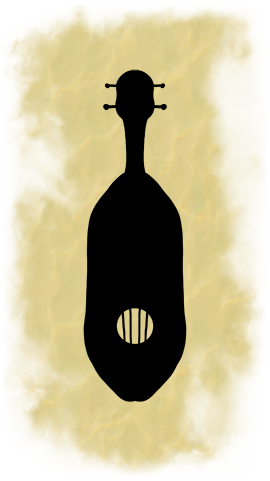

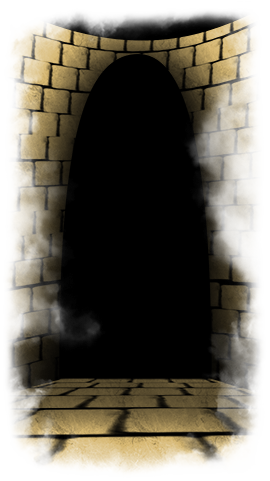
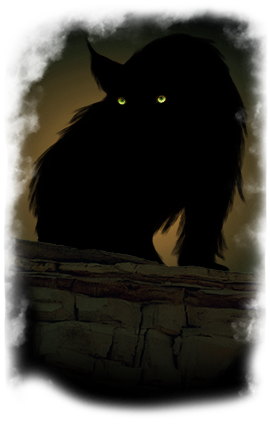

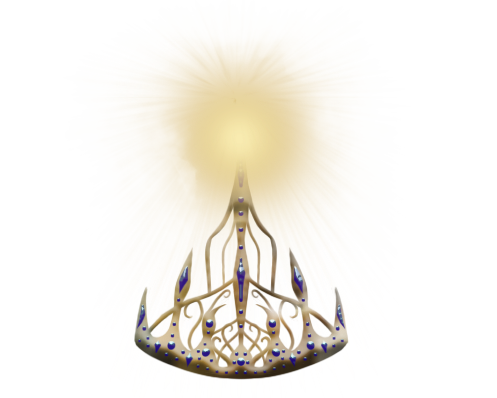
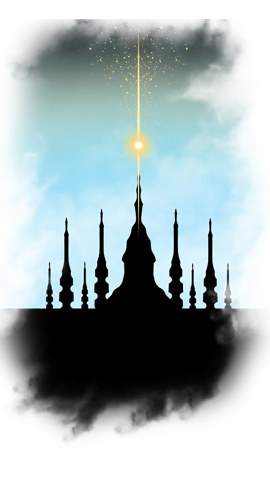
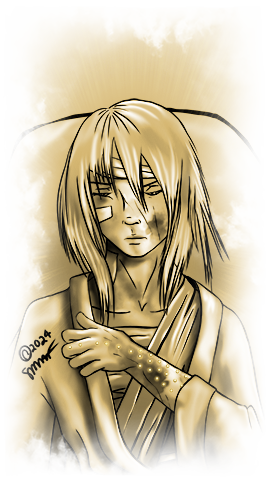


What a great article! The layout makes it easy to read through and fits perfectly with the explanations of the various arenas. It must be such a stressful evening before the gauntles for those boys, knowning full well that the changes are so small to emerge on top. It is a good thing that the practice finally came to an end.
Thank you! I'm glad the layout worked so well. Yeah. It was a terrible time for the boys, and a grand relief when the Gauntlet finally ended.